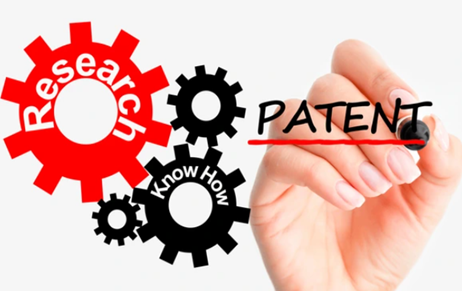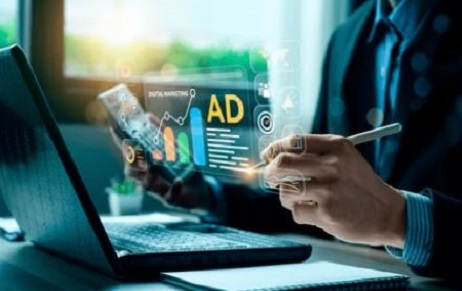Patented, which means giving an exclusive right to the patentee to protect their invention from…
Patents and Public Health
Introduction
Patents and public health is the most relevant topic of discussion when the whole world is fighting against the global pandemic, Covid-19. It is no doubt that granting patent protection to a drug is important and serves many purposes, but can we put the lives of millions of people at stake in this time of pandemic to protect the intellectual property rights of the drug manufacturers? How can the policymakers strike a balance between Patent laws and public health?
A patent is an exclusive right granted to the inventor for his or her invention. The invention can either be a product or process. For acquiring a patent, the invention needs to pass the three-step requirements of novelty, non-obviousness, and industrial application. A patent holder has the exclusive right to the patented invention and he or she can exclude others from using or selling the invention. Any person other than the patent holder cannot use or sell the patented invention without the prior permission of the owner of the patent. The patent law offers protection to the invention on the condition that the invention will be made available to the general public and will be used for the benefit of the world at large.
Health means to live a life without illness or pain and includes a state of complete well-being, not just physically but mentally and socially. As per WHO, Healthcare means to prevent, treat or manage any illness through the goods and services designed and offered.
Recently, the representatives from all 164 member countries of the World Trade Organization met at Geneva to discuss the proposal raised by Indian and South Africa to waive broad sections of the WTO’s intellectual property rules. India and South Africa proposed the member countries forge an agreement and come out with a way to recognize patents of the drugs developed, to fight against coronavirus. The proposal would require the waiver of the intellectual property rights of the drug manufacturers till the time the large portion of the world’s population would be vaccinated. However, no consensus was reached.
Patent Protection in Drug Industries
As per Article 27(2) of the Universal Declaration of Human Rights and Article 15(1) (c) of the International Covenant on Economic, Social, and Cultural Rights, the moral and material interests of the author resulting from any scientific, literary or artistic production should be protected. Like any other inventions, developing any drug involves huge investment and risk in research and development along with the expensive and time taking clinical trials and approval procedures. The patent protection granted to the drugs is one of the incentives to the manufacturers of the drugs to develop a new drug. However, the patent protection for any invention is for only 20 years. After that time, the invention will come into the public domain and can be used by any person without any prior consent of the patent holder.
The patent holder of a drug is required to make the drug available to the general public at reasonable prices for the benefit of society at large. To ensure that the drug is used in the public interest, various provisions are incorporated in the Patent laws, such as compulsory licensing, generic drugs, ever-greening of patents.
Compulsory Licensing
In compulsory licensing, the government can allow a person other than the patent holder to produce a patented product or process without taking the prior permission of the patent holder. It is an exception to patent protection granted to the invention. The provision of compulsory licensing was incorporated in the WTO’s agreement on Intellectual Property by the TRIPS Agreement. As per Article 31 of the TRIPS Agreement, member countries are allowed to use the patented invented by the government or third parties authorized by the government, without the authorization of the right holder. It further states certain conditions which are required to be satisfied while authorizing a compulsory licensing of the patented invention:
- Such authorization shall be considered on its individual merits.
- The authorization may be granted only if, prior to such authorization, efforts were made by the proposed user to obtain permission from the right holder of the invention on reasonable terms and conditions, and such efforts were not fructified within a reasonable period. However, this requirement may be waived by the member in case of a national emergency or extreme urgency.
- Such use shall be non-exclusive and non-assignable.
- Such use shall be authorized for the domestic supply.
- Adequate remuneration shall be paid to the right holder in the circumstances of each case and the same shall be decided after taking into account the economic value of the authorization.
In India, the provision of compulsory licensing is incorporated under Section 84 of the Patents Act, 1970 on the same lines of the TRIPS Agreement. Bayer Corporation v. Union of India is the landmark judgment of compulsory licensing, in which the compulsory license was granted for the first time by the Patent and Trademark Office Database in 2012.
However, the provision of compulsory licensing can be used only after the expiration of three years from the grant of the patent. This requirement may be waived off by the government in case of a national emergency. The applicant of the compulsory license may take any of the following grounds in the application filed before the Controller:
- The reasonable requirements of the general public have not been satisfied by the patented invention.
- The patented invention is not available to the public at reasonable and affordable prices.
- The patented invention is not worked within the territory of India.
Ever Greening of Patent
The term for which the patent protection is granted to the patent holder is a maximum of 20 years, after which the invention comes into the public domain and any person can use the invention without the prior permission of the patent holder. Due to the same reason, many manufacturers adopt various strategies for ever-greening their invention. As the name suggests, ever-greening of patent means extending the term of the patent granted, which is about to expire. This is done to enjoy the monopoly over the invention for a long time and to make more profits.
When the term of patent protection is about to expire, the patent holder makes trivial changes in their existing patented invention and applies for a new patent. The trend of ever-greening of the patent is very high in the pharmaceutical industry because once the term of the patent protection to a drug expires, it comes into the public domain and becomes a generic drug. As there are various generic drugs of different companies already available in the market, the price of the product is reduced due to high competition. Ever-greening a patent is against the interests of the general public and only serves the interests of the big companies. To prohibit these practices, section 3(d) was incorporated in the Patent Act, 1970 in 2005.
It states that the “mere discovery of a new form of a known substance which does not result in the enhancement of the known efficacy of that substance or the mere discovery of any new property or new use for a known substance or of the mere use of a known process, machine or apparatus unless such known process results in a new product or employs at least one new reactant” is not patentable under the Indian Patent laws.
In the landmark case of Novartis AG vs Union of India, Novartis challenged the decision of IPAB to reject the Beta crystalline form of “Imatinib mesylate”. The challenge of Novartis was rejected by the Supreme Court on the ground that the new drug does not enhance the therapeutic efficacy of the known substance and it does not involve any inventive step.
Parallel Import
The parallel import includes the import and resale in a country, without taking the consent of the owner of the patent. This principle is based on the fact that the patent holder has the exclusive right of first sale or distribution of the product only and not on the use or resale of the product. The patent holder cannot control the subsequent distribution of the product sold. The principle of parallel import is in line with the WTO’s trade liberalization policy and is very important for the availability of the invention at cheaper prices.
Conclusion
While passing the TRIPS Agreement, the policymakers intended to strike a balance between IP rights and public health. TRIPS Agreement laid down various rules to achieve the balance and control the monopoly. Ever-greening of patents, compulsory licensing, parallel imports, and prescribing maximum term for the protection of a patent is few of such instances. The system of granting patent protection to the drug manufacturer cannot be done away with completely as it is very much necessary to encourage the potential manufacturers to undertake the research and develop new drugs. However, it is important that the innovators must not forget the main reason for innovating a drug and rather focus on making the drug available to the masses.
Author: Pratiksha Rawat, a law student of Amity Law School Delhi, an intern at Khurana & Khurana, Advocates and IP Attorneys. In case of any queries please contact/write back to us at aishani@khuranaandkhurana.com.



